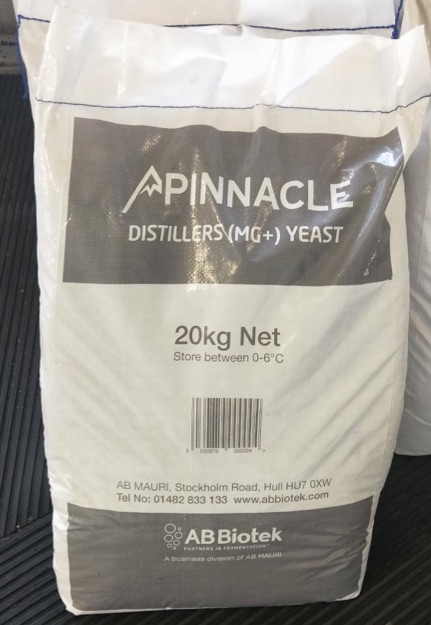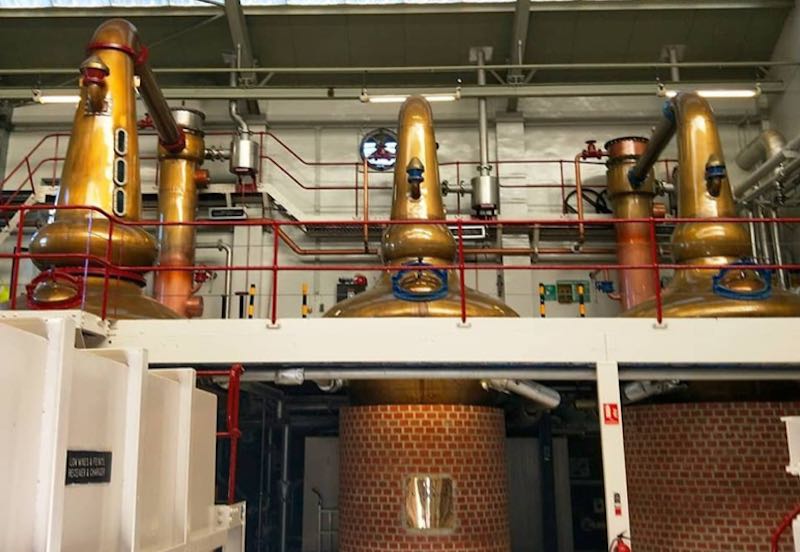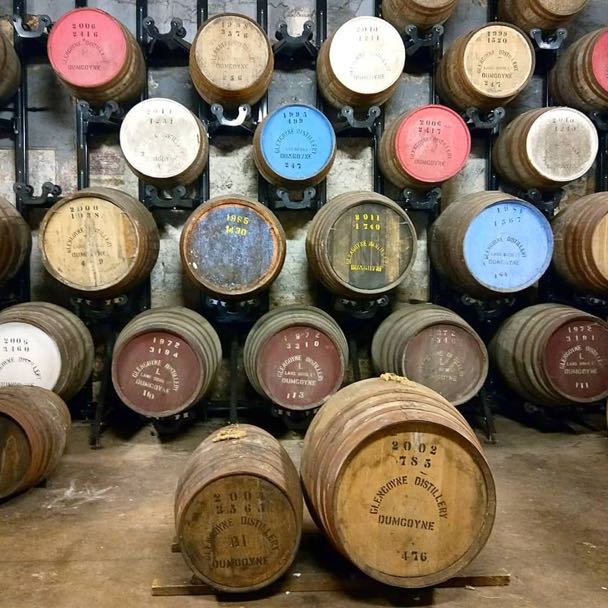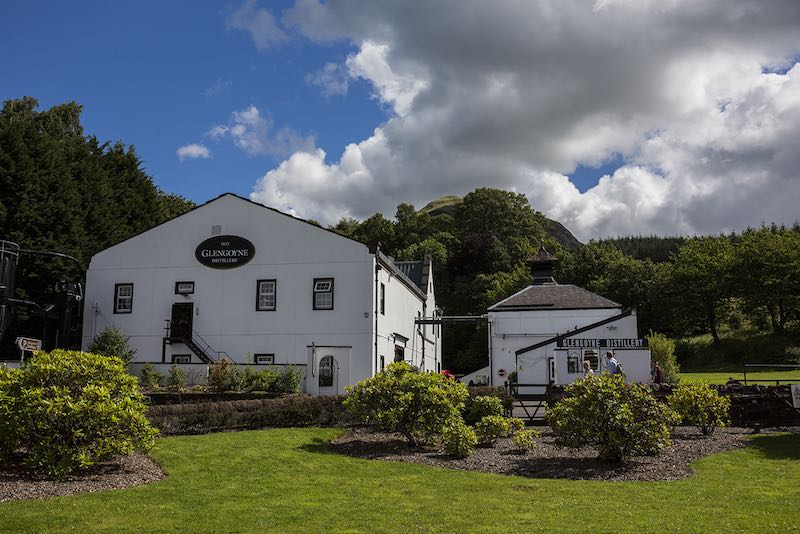Guest Writer: Hongfu’s take on Glengoyne’s Production
Glengoyne is a beautiful Highland Distillery with a warehouse just across the road in the lowlands. They have a long reputation of using quality casks and produces whiskies that are sweet, unpeated and sherried. It came as no surprise to me when M&S chose to feature a 14-year-old in their range! Glengoyne holds many special memories for me – Jonathan Scott conducted my first proper whisky tasting at The Single Cask @CHIJMES, and I had Glengoyne 21 year old as a gift on my 21stbirthday from a generous friend!
With the help of Zerlina from WhiskyGeeks and Jonathan Scott of Glengoyne Distillery, I got an exclusive tour to learn the production of this delicious golden nectar! As a way of saying thanks, I asked Zerlina if I could write an article for WhiskyGeeks to share my experience at Glengoyne, and so, here it is!
My Glengoyne Experience
Glengoyne is a mid-sized distillery producing approximately 1 million litres per year. Glengoyne has two water sources. It uses the water from Loch Carron for production and Blairgar Burn for heating and cooling. 100% of the malt used is the Concerto variety coming from Simpsons, a malting company just to the right of Edinburgh. That might change in the future as more distilleries start switching to the Laureate variety. Some other distilleries have allegedly had their highest yield in their wash during experiments, so this seems promising for the future of this barley variety!
The Production Process
Mashing
The mill crushes the malted barley to grist to break open the husk of the grain. The rollers of the mill grind barley to a standard ratio of approximately 20% Husk, 10% Flour, and 70% Grist. This ratio is vital to prevent clogs and blockages in the pipes. The grist mixed with water to form a mash, with a porridge consistency, which is similar to adding hot water to a bowl of oatmeal. A traditional rack style mash tun, which has rakes turning continuously, mixes the “porridge” mash. The hot water helps dissolve some of the soluble sugars and to start breaking down the starch in the barley into sweet soluble sugar. This process separates the sugars from most of the solids. Hot water is added three times at Glengoyne to extract almost all the sugars from the mash. Each stream of water is hotter than the previous one.
Glengoyne’s way
At Glengoyne, the first stream of water to mix with the grist is at 64oC, followed by a second stream of water at 78oC. The first and second streams break most of the starch in the grist into sugar. The third and final water stream comes approximately between 88-90oC to take away any remaining sugar. The process strips almost all the sugar in the grist, much like how hot water dissolves more chocolate and much faster than cold water. The temperatures of the water streams gradually increase so as not to change the natural qualities of the malted barley.
Fermentation
The sugared water from the first and second streams is called wort. The distillery cools the wort to below 20oC before channelling it to the washbacks for fermentation. The temperature is crucial as yeast cannot survive in high heat. The sugary liquid from the third stream of water is called the sparge. Sparge is very hot and have low sugar content. The sparge isn’t wasted though; it is piped away to be used as the first stream for the next mash at 64oC. The remaining barley solids in the mash tun is called the draff, and though it has almost no sugar, it is high in proteins. The draff is sold to farmers as cattle feed. It builds a very strong relationship between Glengoyne and the farmers around the area. Draff also grows healthy cows and produces delicious Scottish beef!
Fermentation at Glengoyne

A 20kg bag of Pinnacle Distillers Dry Yeast (MG+) – Photo by Hongfu Teo
The distillery uses Douglas Fir Wooden Washbacks for fermentation. Douglas Fir trees have fewer branches with lesser weak points, making them strong and lasting as washbacks. Each washback can last a couple of decades.
Each mash pipes into one of six Douglas Fir Wooden Washbacks for a fermentation period of approximately 56 hours. The team adds MG+ Pinnicale Dry Yeast into the washback to start the fermentation process. The yeast will change the dissolved sugars in the wort into low strength alcohol. This fizzy beer-like liquid brewed in the washbacks is called wash, and when the team completes the fermentation, the wash has an alcoholic strength of approximately 8.5% abv.
Distillation

Glengoyne’s Stills (from left) – Wash Still and 2 Spirits Stills (Photo by Hongfu Teo)
This wash is then sent to the wash still, which is the bigger pot still with three windows on the left of the photo. The wash still takes away some of the water and all the solid particles. This is done by heating the liquid until it bubbles. The vapours rise to the top of the pot still and down the lyne arm, to a shell and tube condenser that turns the vapour into liquid. The distillate from the wash still, known as low wine, flows down the lyne arm at approximately 16L/min. This low wine has an abv of 24%. The low wines enter the tank called the low wine receiver.
The stillmen have to ensure that the wash does not boil over the still and go down the lyne arm by monitoring the bubbles constantly. This is to ensure that the low wine does not have solid particles. The window on the still is usually the indicator that this still is a wash still.
A Second Distillation
The stillmen split the low wines between the two small onion-bulb Spirit Stills (in the picture above) to be distilled a second time. The second distillation increases the alcohol percentage of the final product. The pair of spirit stills is on the right of the photo above. The distillate comes out of the Spirit still in three stages: the Foreshots, the New-Make and the Feints (aka the Head, the Heart and the Tail).
The foreshots are cloudy and undesirable as it contains a lot of alcohol and lighter flavors. At approximately 75% abv, the distillate becomes clean and clear and smells sweet. This is the start of the “heart” or new make. The stillmen collect the distillate from this moment as the new make. Heavier flavours appear at approximately 65% and the stillmen direct the distillate to feints. The foreshots and feints are then channelled into the still again as there is still a significant amount of alcohol in them. The figures of 75-65% are approximate because temperature affects the reading. Stillmen usually use charts to ensure that the Glengoyne new make spirit is sweet and clean.
The Slowest Distillation
Glengoyne also has the slowest distillation from the Spirit Still at a volumetric flow rate of 5L/min. This slow distillation allows the liquid to have prolonged contact with the copper stills. This copper contact takes away sulfur compounds, which is another reason why the Glengoyne spirit character is so unique, and clean.
The New Make

Casks on display at Glengoyne (Photo by Hongfu Teo)
The new make is usually around 71% abv, and Glengoyne watered it down to 63.5% before filling it into a cask. Glengoyne has a 3-fill cask policy so after the third use; they stop using the cask. This policy ensures that every cask provides adequate maturation to the new make. The distillery shipped Oloroso sherry casks whole from Spain and seasoned them for at least two years. The process also strips the rougher tannins off the wood, giving the casks more Oloroso character! The casks give Glengoyne whiskies notes of raisins, dried fruit, nuttiness, chocolate, cinnamon and Christmas Cake! The sherry casks also provide all of Glengoyne single malt’s colour; the distillery does not use E150a caramel colouring!
An Extremely Educational and Enjoyable Journey
It was a lovely trip to the Glengoyne distillery and a one which I learnt a lot from. Thank you, Jonathan Scott, for the insightful tour! I am sure that I will be back again in future!
All this talk of Glengoyne is making me thirsty. Now, excuse me as I pour myself a dram of my favourite Glengoyne Core Range Bottling; the 21yo aged in 1stfill Oloroso cask… for 21 years!
Slainté!



